Table of Contents:
The third and final installment of must-have accessories for our computer. Naked Raspberry Pi is not only worth an outfit – you definitely should try it. Why use only the most basic functionality when you have the best minicomputer in the world at hand? Accessories mean new features, and upgrades are always fun.
Raspberry Pi cables
Combined category. Kind of. Without the right wiress you can’t move forward with fairly anything more advanced than basic functions, and as we’ve already covered everything related to Raspberry Pi and USB in the previous episode, it’s time to cover other cables. One of the advantages of the Raspberry Pi computer is its ability to process and transmit video and audio, and in addition to a small display, we can also connect a large monitor to the RPi – the same as to a desktop PC, or a sound system, for example. To do this you need appropriate video and audio cables. The HDMI standard works great in this common role.
It certainly comes as no surprise to you that cables have different ends. It goes for any adapter or cable having two different ends, too. Just as it is no surprise that the official accessories from the Raspberry Pi Foundation work best here, following in the footsteps of other add-ons. You can find them under Raspberry Pi cables category, all of which are labeled as original / official.
Using original HDMI, miniHDMI, HDMI 1.4 or HDMI 2.0 cables for Raspberry Pi 4 or other models with selected length is a guarantee of good quality contact in any application such as:
- home theater set,
- game console,
- computer monitor,
- camera transmission system.
There’s no rocket science when it comes to a cable – just make sure you’ve chosen the end you need for the specific application you’re connecting to your Raspberry Pi, and of course make sure the cable itself is compatible with the model of minicomputer you’re using, check if they support the HD mode you’re interested in (more information and full technical specification on the product page) and choose the length you need. In this category you will also find converters, e.g. video from HDMI to VGA and audio to analogue audio jack in the set with jack cable.
A decent set of Raspberry Pi cables for any occasion is a collection consisting of HDMI cables, USB cables and audio cables. As for adapters – adapters are never enough. Just remember that differences in price usually mean differences affecting the quality and length of use of the cable. On the other hand, if we are interested in GPIO and our own projects without soldering, connection cables for prototyping will turn out to be indispensable.
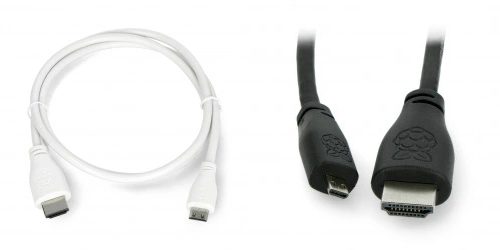

Raspberry Pi power supply
This can be done via classic means like socket-plug power supply or with a HAT. You can choose from power supplies designed to safely power all models of Raspberry Pi, specially designed HATs that allow the computer to be powered by a Li-Pol lithium polymer battery, and caps that allow POE (Power over Ethernet) charging – this third option is the standard that will give the Raspberry Pi electricity and an Ethernet connection simultaneously.
First, let’s cover the matter of classic power supplies with a plug into the socket: the leading proposals are two. The first is the justPi power supplies prepared by Botland (you can read of them more at the link). The tile below will take you to the store and full technical specifications of both power supplies and justPi accessories designed with Raspberry in mind. They are trusted by thousands already. The second is of course the official Raspberry Pi Foundation power supplies in the “Raspberry Pi Power Supply” category.
Additionally, there is nothing against us using Raspberry Pi power supply to charge your smartphone/tablet battery.
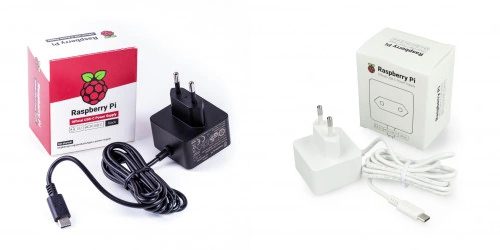
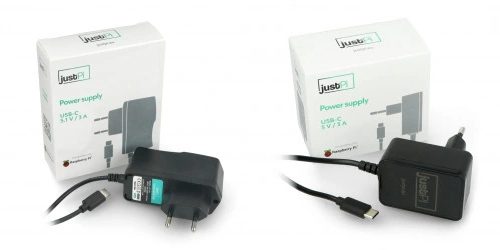
The modules that power the boards through the twisted pair allows you to connect to an Ethernet network. This is the POE (Power over Ethernet) standard – by connecting a single cable we provide the board with access to the computer network and powering the device in one. Some overlays that can act as power supply or emergency power supply thanks to Li-Po battery. This provides additional security in a situation when suddenly there is no power and our fruits of our hard work hang in the balance. Devices of this type often have additional components such as RTC clock or LEDs indicating the status of the connected battery. On the peak of worldwide popularity of the Raspberry Pi platform, diverse models and replacements for alternate and/or emergency charging have emerged. We recommend taking a look at the titular hero of the recent release, the Raspberry Pi PoE+ HAT.
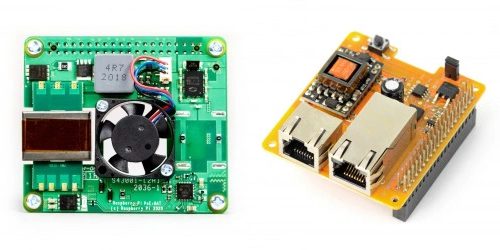
Raspberry Pi cooling
Once again, the most important thing comes as last. Burnt-out modules sting eyes and nostrils as much as the wallet.
As the old joke goes, electronic devices not only work better plugged in, but also surrounded by soothing coolness. A well-chosen cooling method increases longevity and performance. This is an aspect that is hard to overstate. In the case of Raspberry Pi. Here the methods are also several, and the accessories themselves dozens, if not hundreds. And as usual, among them some take the lead – in addition to the official RPi Foundation accessories we recommend protecting and cooling with justPi enclosures.
In general, cooling is provided by:
- specific types of Raspberry Pi cases and ICE Tower cooling stackers,
- heat sinks with fans – fairly good results, but not in every case,
- thermopads / thermal conductive tapes – in combination with a heatsink (not a standalone).
Various cases offer passive cooling based only on solid elements – heatsinks of various sizes, shapes and materials of construction. Some of them are equipped with thermally conductive tape. Featured ArgonONE v2 aluminium case is an example of a heat sink with tabs on the top of the case that allow the heat to be transferred to the hotter components. We can also place additional active cooling in them in the form of a fan.
Usually the slightly heavier copper heatsinks are considered better than aluminium ones, as copper conducts heat better. For those with more Raspberry Pi 4 computers, it’s worth to check LeapMatic Raspberry Pi cases – those are vented, DIN-rail mounted and stackable, which provides natural airflow and has a slot for a dedicated fan, which you can find in the accessories. Details of the mounting components and accessories on their respective product pages at Botland store.
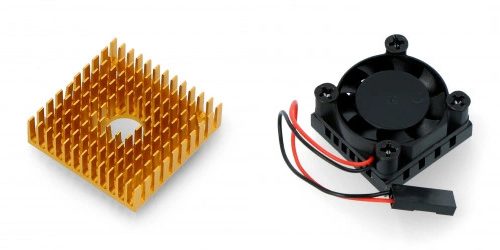
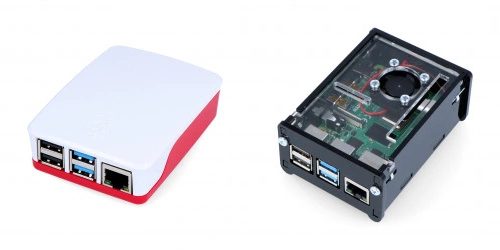
How useful was this post?
Click on a star to rate it!
Average rating 0 / 5. Vote count: 0
No votes so far! Be the first to rate this post.






















